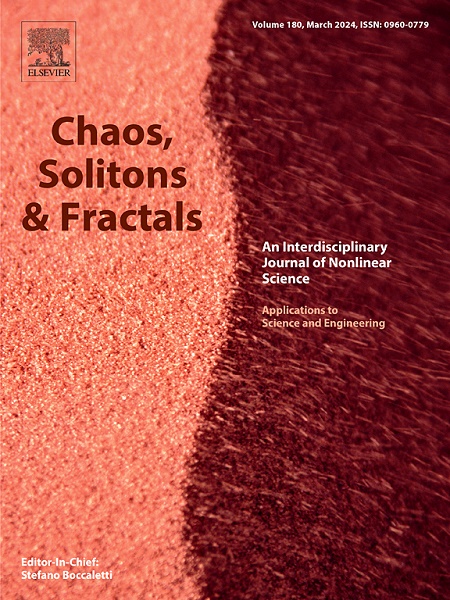A neural network based Nipah virus model for healthcare disaster management
IF 5.3
1区 数学
Q1 MATHEMATICS, INTERDISCIPLINARY APPLICATIONS
引用次数: 0
Abstract
The present investigations provide the solutions of the fractional order Nipah virus (NiV) model by using the stochastic computing neural network. This model has significant impacts on disaster management based on the accurate prediction, early warning system, resource allocation, and economic impact assessment. Fractional calculus is used to present more real results as compared to integer order derivatives. The NiV model is categorized into susceptible individuals, exposed individuals, infected individuals, risk population, quarantined individuals, and recovered individuals. By leveraging the fractional NiV model, the disaster management teams can better perform data-driven decisions, thus saving more lives by reducing the effects of virus outbreaks. The proposed single layer neural network stochastic scheme is implemented through the scale conjugate gradient as an optimization. Moreover, twenty numbers of neurons in the hidden layer, sigmoid activation function and the dataset is obtained through Adam scheme. By comparing the outcomes and employing certain statistical accomplishments, the reliability of the approach is demonstrated. The comparison of the results in good order as well as absolute error around 10−04 to 10−06 perform the reliability of the designed scheme. These simulated solutions based on the proposed scheme also support in the future by taking the real values of the health care-based systems.
求助全文
约1分钟内获得全文
求助全文
来源期刊

Chaos Solitons & Fractals
物理-数学跨学科应用
CiteScore
13.20
自引率
10.30%
发文量
1087
审稿时长
9 months
期刊介绍:
Chaos, Solitons & Fractals strives to establish itself as a premier journal in the interdisciplinary realm of Nonlinear Science, Non-equilibrium, and Complex Phenomena. It welcomes submissions covering a broad spectrum of topics within this field, including dynamics, non-equilibrium processes in physics, chemistry, and geophysics, complex matter and networks, mathematical models, computational biology, applications to quantum and mesoscopic phenomena, fluctuations and random processes, self-organization, and social phenomena.
 求助内容:
求助内容: 应助结果提醒方式:
应助结果提醒方式:


